Why We Designed a Code Zero Sail for the Foiling Viper
Racing a hydrofoiling boat around a course demands absolute precision — not just from the crew, but from every part of the boat. There’s no hiding out there; small mistakes get amplified, and poor decisions can be costly in terms of speed and control. The foils themselves are constantly trying to throw you off, and the boat teeters on the edge of stability, especially when you’re pushing hard in racing conditions. Any lapse in concentration can be catastrophic making it a relentless challenge.
On the waters of Moreton Bay we are often treated to strong sea breezes matched with a short, sharp chop unique to the region. The Viper is sublime to windward. Once the foil rake and rudder differential is tuned correctly, we can confidently induce windward heel into the boat and carve up at speeds close to 20 knots. The boat simply feels light and well-balanced.
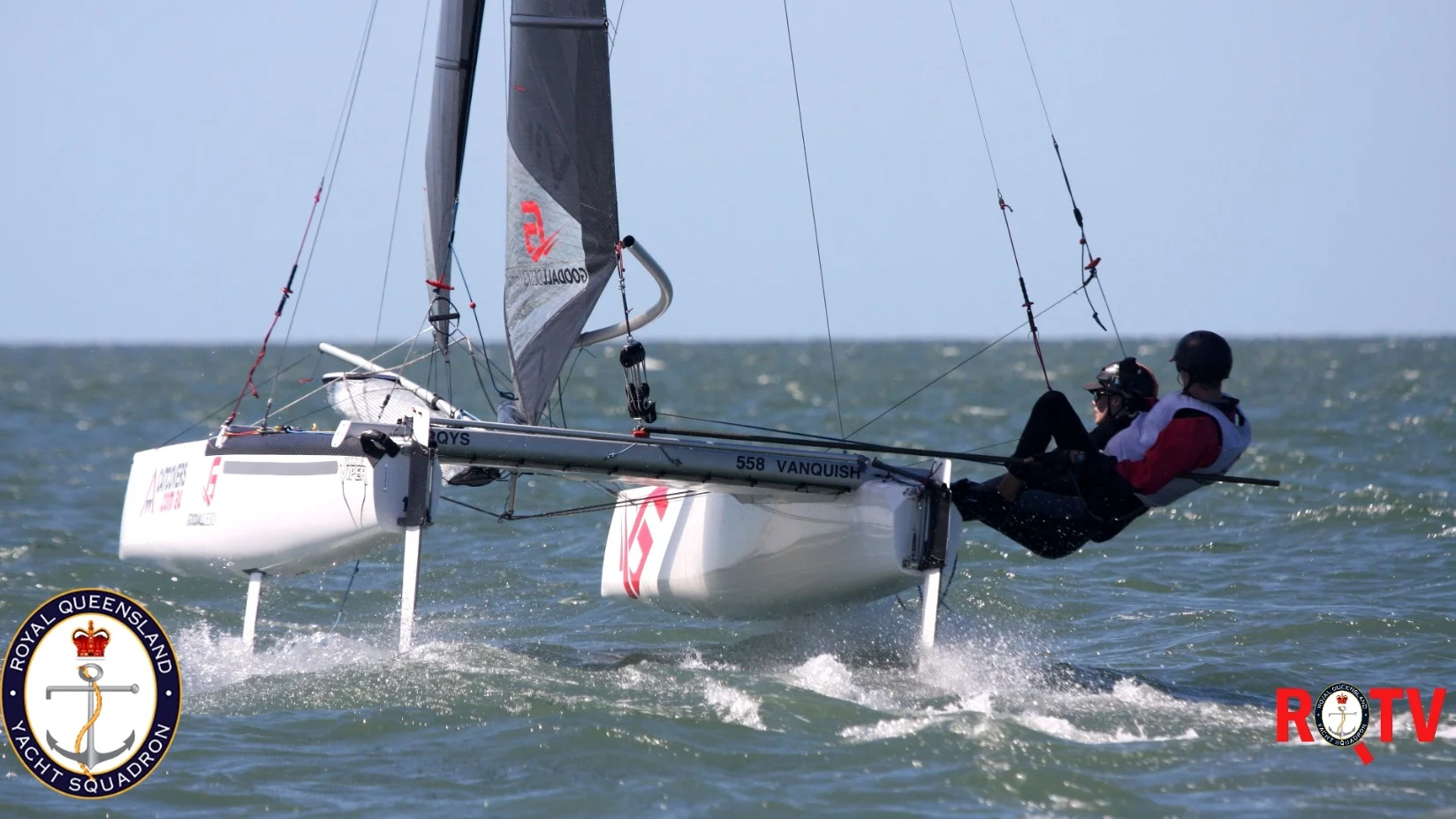
Downwind, finding and holding the optimal groove is difficult. The foils and rudders are both high aspect, which means they have relatively little surface area to grip the water. This results in a boat that is highly sensitive and particularly susceptible to rolling from side to side especially in waves or during a gust. We theorised that this instability wasn’t just about the foils or sea state—it could actually be a product of the sailplan itself. Specifically, the spinnaker.
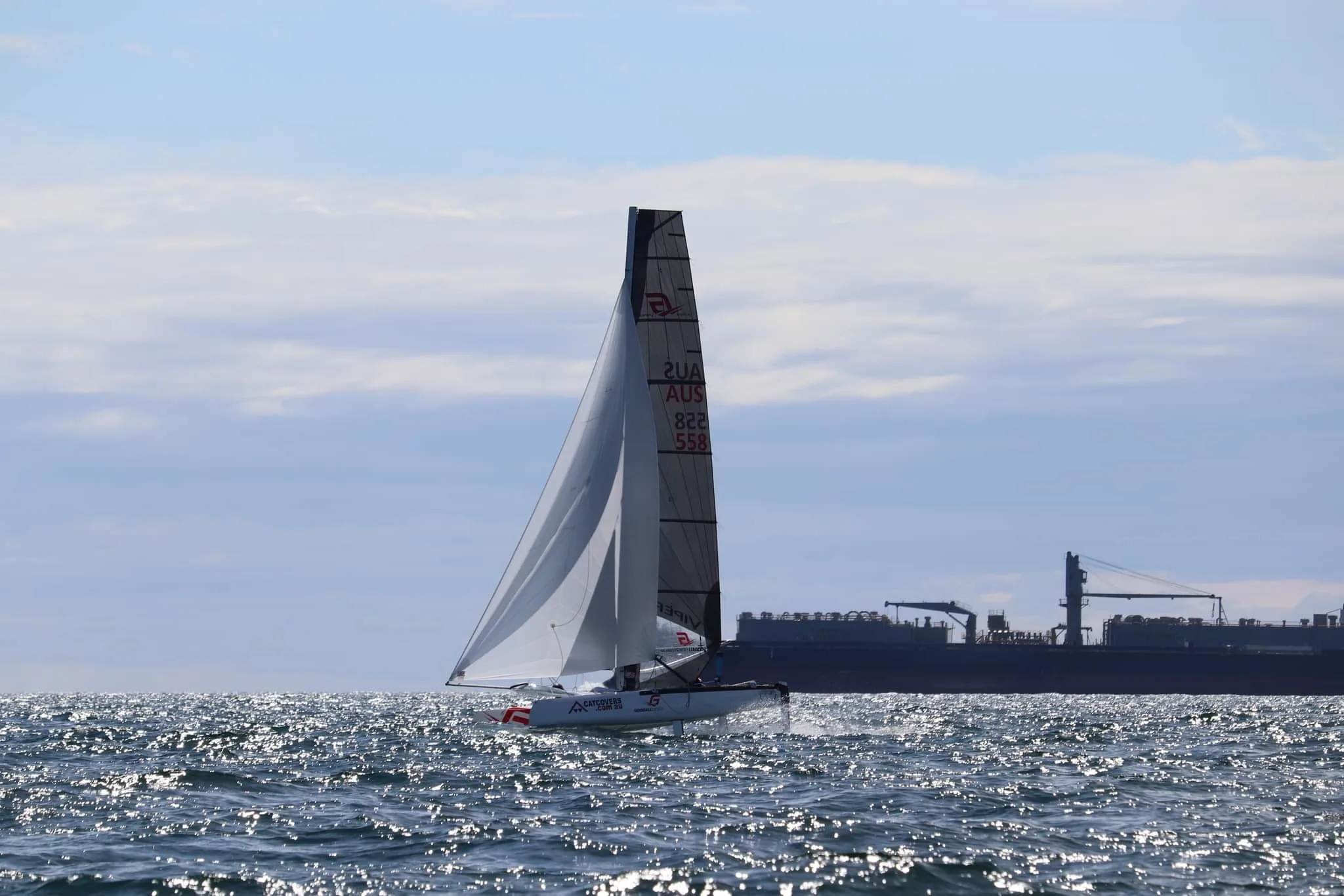
The spinnaker on the Viper is deep and powerful, which is great until we accelerate and the apparent wind shifts forward. At that point, the sail begins to collapse inward, disturbing the flow and throwing the balance of the boat off. It felt like we were fighting the spinnaker rather than working with it, especially as the boat accelerated. That’s when we started thinking: what if we could bring some of that upwind stability into our downwind sailing?
Drawing on experience racing the larger SL33 catamaran, we knew flatter, blade-like screecher sails were often favoured over traditional spinnakers precisely for their ability to handle high apparent wind speeds downwind, keeping the power delivery continuous and the platform stable. Looking further afield at other cutting-edge foiling classes, we drew significant inspiration from the ETF 26 fleet, which successfully utilises a dedicated code zero sail. Watching them and reflecting on the SL33 experience solidified our thinking: a flatter sail shape could better handle the dramatic increases in speed and apparent wind angle encountered when foiling fast downwind. Instead of collapsing, it stays loaded, allowing the boat to keep accelerating. This raw speed can then be converted into VMG (Velocity Made Good) by allowing us to progressively bear away towards the mark while maintaining high speed. Our ultimate downwind goal was between 25-30 knots of boat speed.
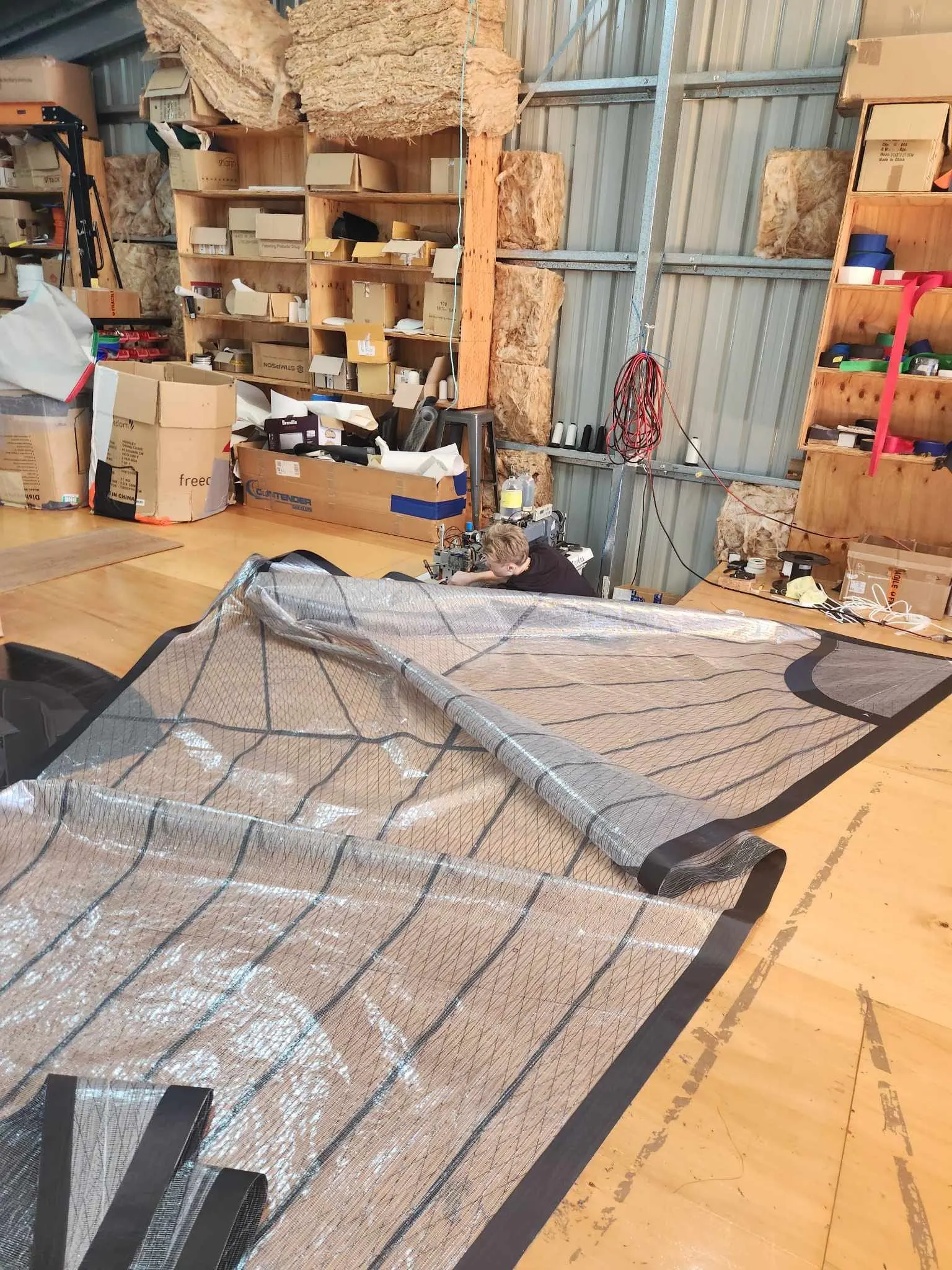
Our first goal was to replicate the flat, stable sail shape of the SL33’s screecher, even if that meant giving up some sail area. This was a conscious trade-off: we weren’t maximising total power, but maximising control. Less depth in the sail would mean less drag and fewer balance issues when the boat speed is up and the apparent wind goes forward.
For material, we opted for code zero sailcloth instead of traditional polyester or nylon used in spinnakers. It’s stiffer and holds its shape better under load, which is exactly what we needed. However, this stiffness made it impossible to stuff into the usual snuffer bag without damage or disfiguration, so we moved to a furling system. This required some hardware adjustments, but the payoff was immediate: the sail could be deployed in seconds, just by unfurling and sheeting on - no need for hoisting or getting off the trapeze.
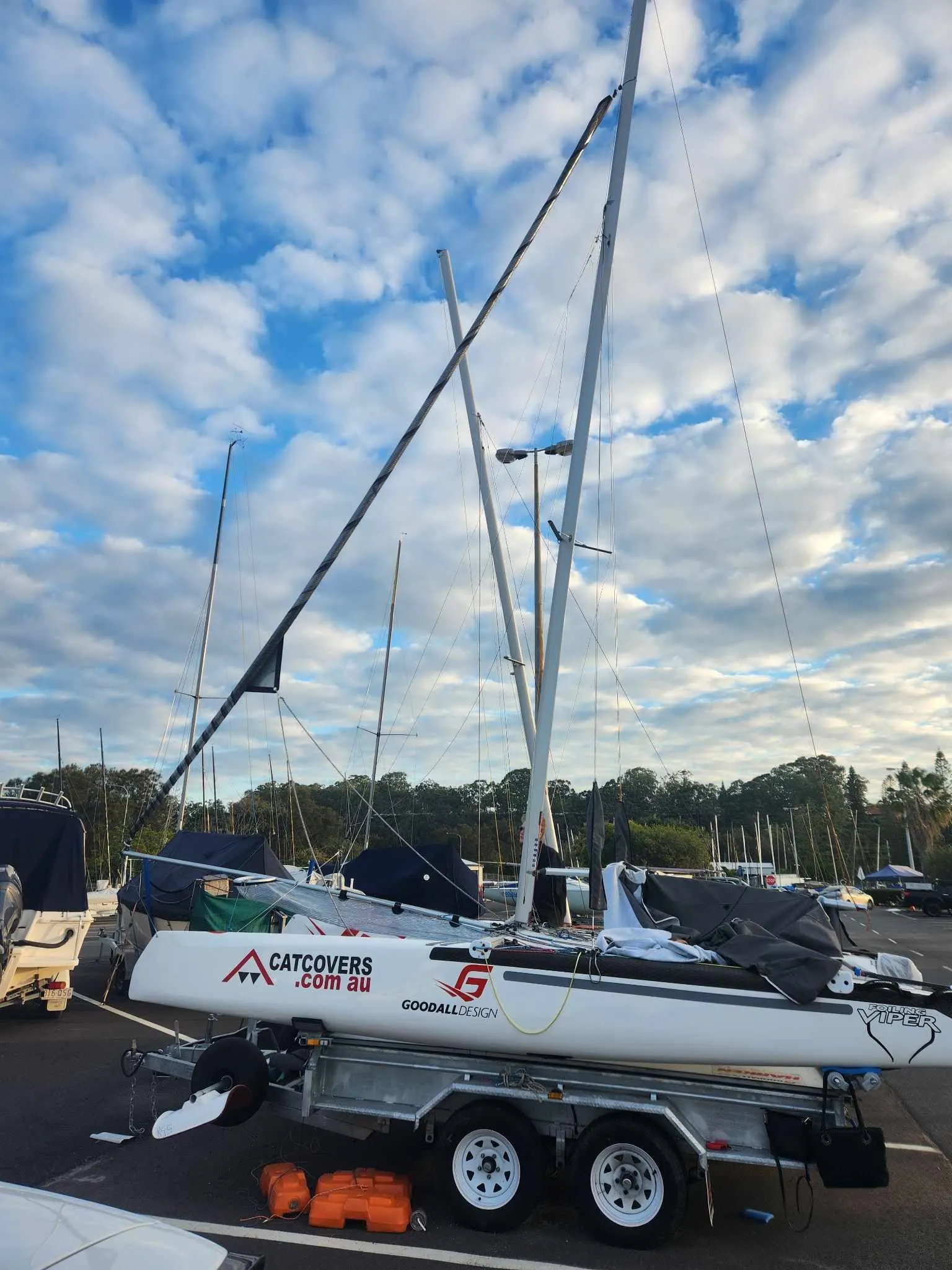
Of course, this brought new challenges. A furled sail sitting to windward while racing upwind can create significant drag and potentially disrupt airflow over the main and jib. The sail was attached to the spinnaker halyard, allowing us to raise and lower it entirely. For now, the sail can be coiled on the trampoline or laid along the pole. This was not an ideal spot, but a more elegant solution could be found later. Throughout testing we simply left the sail raised. We also removed the snuffer bag completely to further reduce drag.
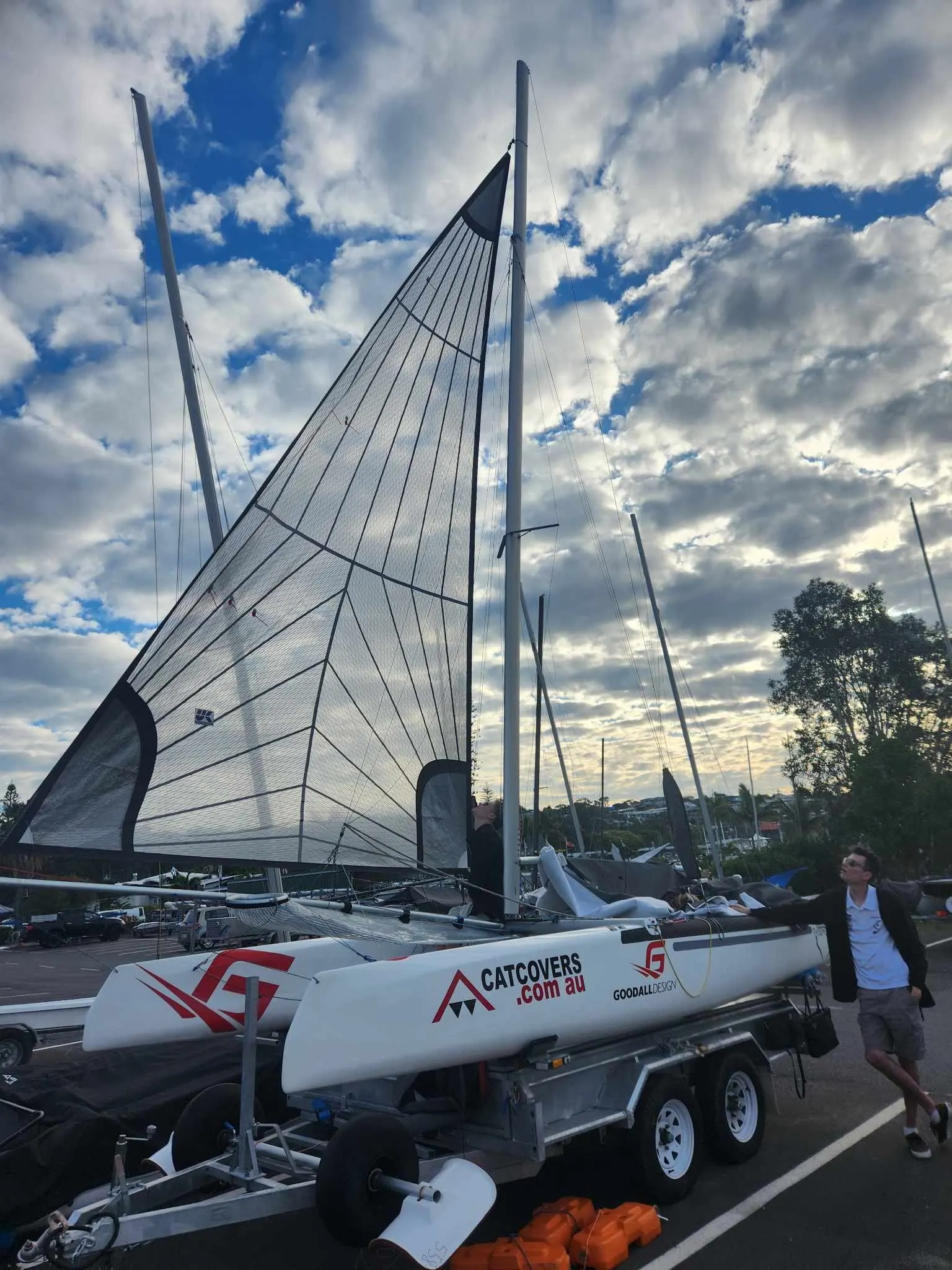
The biggest concern, however, was load. The Viper’s mast and spinnaker pole weren’t designed with this sail configuration in mind. The sail was designed to be used primarily in heavy weather but we tested it first in light air, where we closely monitored the mast shape and base, pole compression and any fittings.
The first on-water test came during winter, when the winds were lighter. In the very first session, even in barely 5 knots of breeze, we found moments where the Viper lifted onto its foils with the code zero. While it was difficult to get a true read on high-wind stability in such light air, where stability comes easily, the boat felt responsive and the systems worked.
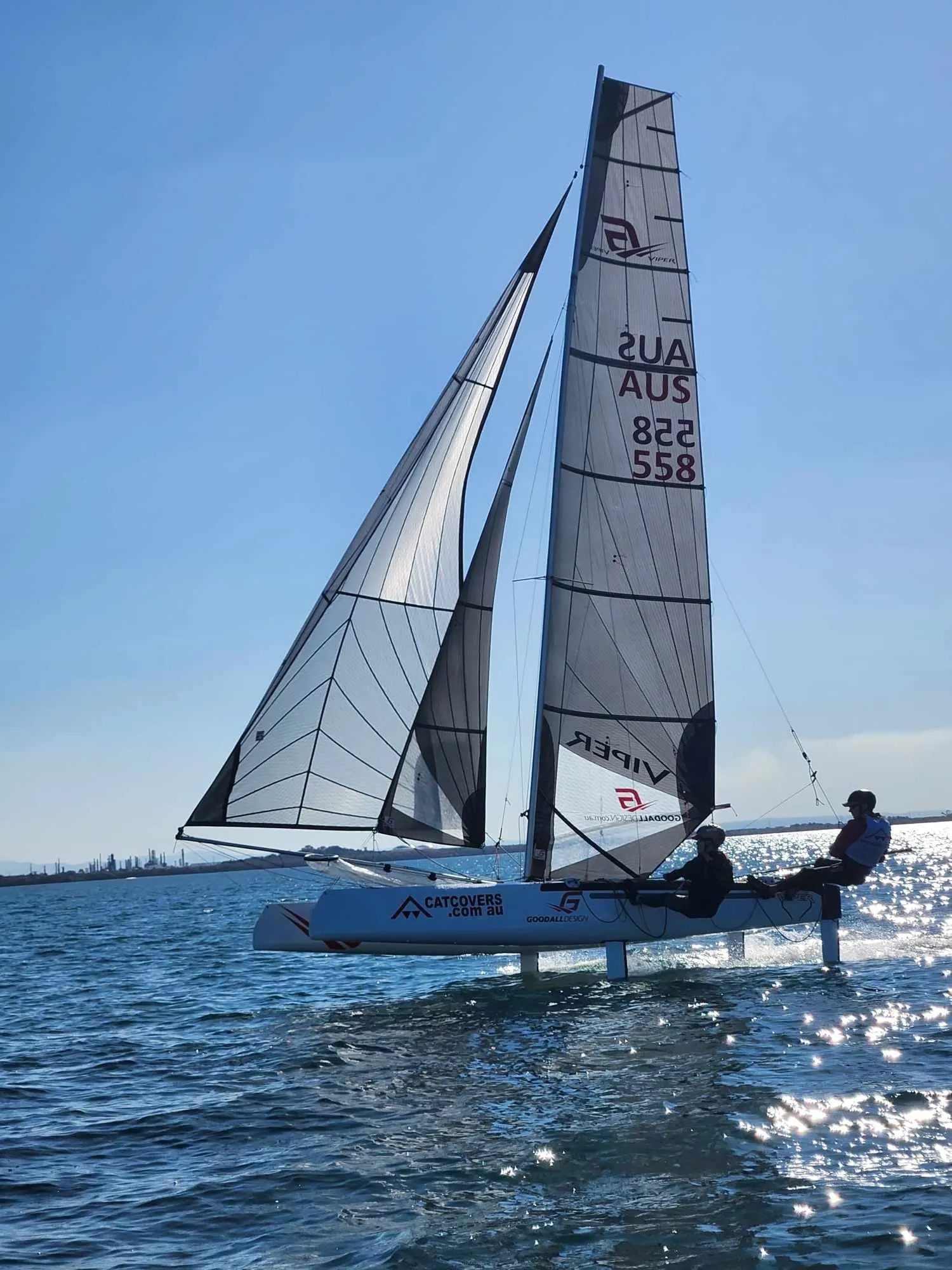
Our second outing provided a more varied test during a long-distance race. Again, conditions started light, around 5 knots. The flatness of the code zero offered an advantage: we unfurled it shortly after the start, using it upwind like a genoa to add power, helping counteract the drag of the foils in the marginal conditions. It seemed to work, keeping us surprisingly close to the back of the F18 fleet competing. However, turning downwind initially proved frustrating. Without enough pressure to build speed and get fully foiling, the sail’s flat shape couldn’t generate effective drive deep downwind; we struggled to make good progress towards the next mark compared to boats using conventional kites.
Then, finally, the breeze built just enough for the Viper to pop up and fly. At this point, however, a significant wind shift made the course unfavourable. We made the call to retire from the race and dedicate the remaining time to pure testing. Even in those light conditions, the boat felt stable and fast with the new sail. The most significant, game-changing difference we noticed was the dramatic lack of rolling motion. Especially when accelerating into a gust or, crucially, exiting one. The boat remained level on the foils, tracking straight, instead of the typical roll to windward and subsequent drop off the foils.
See the video from my racing Facebook page below on the sail’s performance.
Based on these initial tests, we strongly believe the flatter code zero concept is a viable development for the foiling Viper. The marked increase in stability, particularly the reduction in roll, directly translates into more consistent flight and holds the promise of significantly higher average speeds downwind when the breeze is on. It’s genuinely cool to see concepts first developed in large grand prix classes successfully scaled down and applied to smaller boats like ours. For us, this exciting project was shelved as our focus shifted entirely towards training for the 2024 Formula 16 World Championships in Italy. But the potential of the Viper Code Zero remains clear.